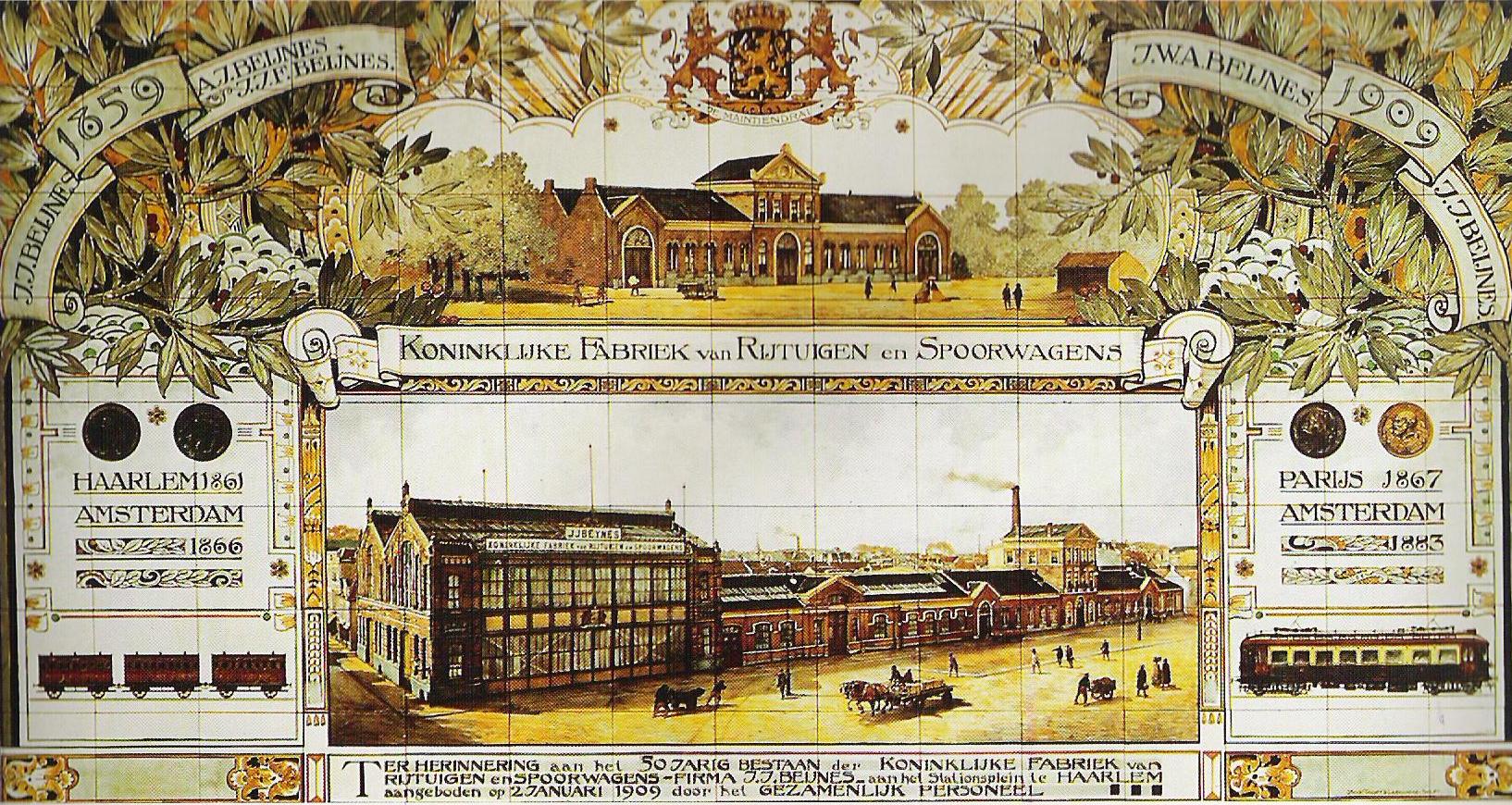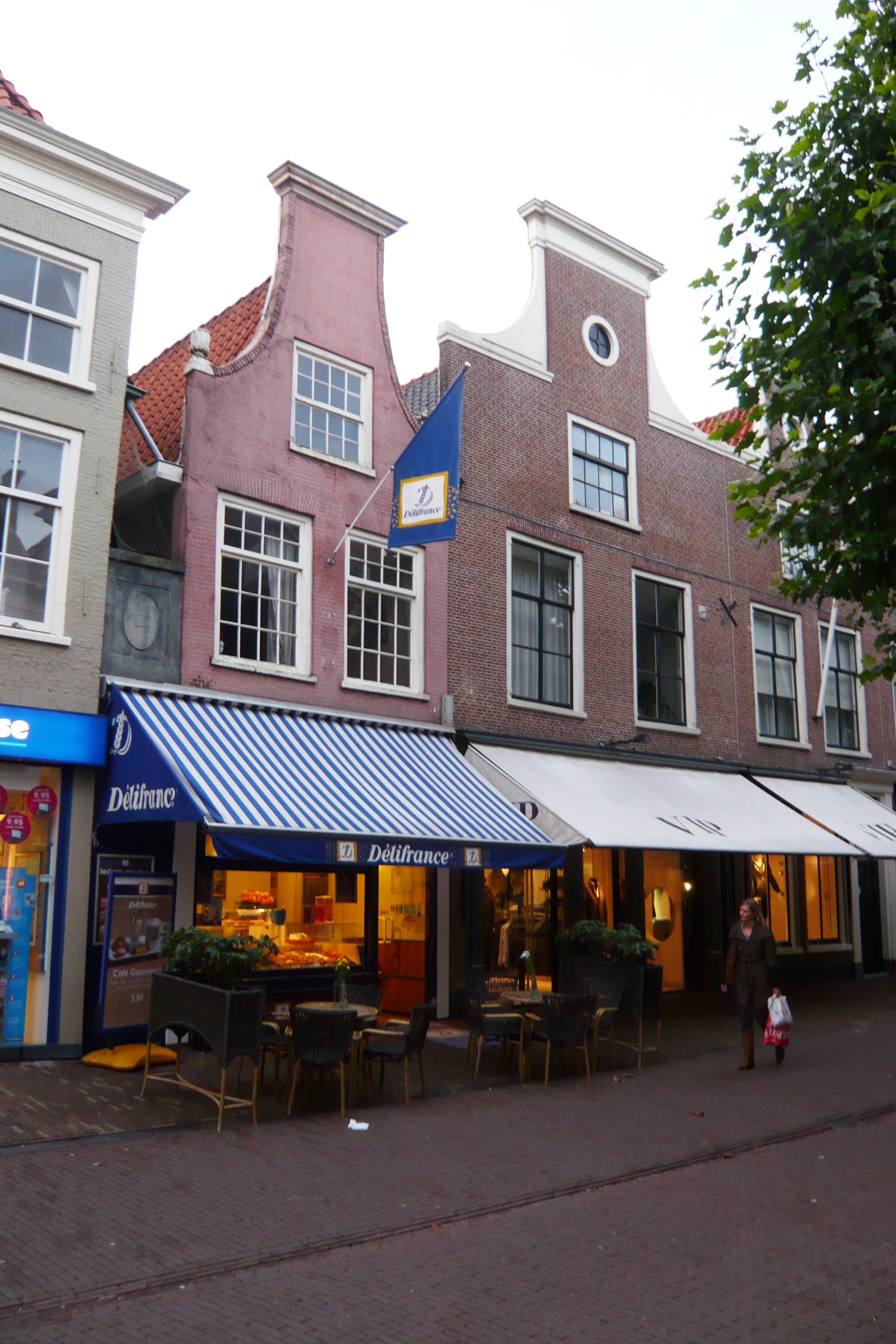Beijnes on:
[Wikipedia]
[Google]
[Amazon]
 Beijnes (1838 – 1963) is a defunct
Beijnes (1838 – 1963) is a defunct
 J.J. Beijnes the elder opened a horse carriage shop (wagenmaker) behind the
J.J. Beijnes the elder opened a horse carriage shop (wagenmaker) behind the
 Beijnes (1838 – 1963) is a defunct
Beijnes (1838 – 1963) is a defunct Haarlem
Haarlem (; predecessor of ''Harlem'' in English) is a city and municipality in the Netherlands. It is the capital of the province of North Holland. Haarlem is situated at the northern edge of the Randstad, one of the most populated metropoli ...
manufacturer of carriages, buses, trains, and trams. It was closely associated with the Hollandsche IJzeren Spoorweg-Maatschappij
The Hollandsche IJzeren Spoorweg-Maatschappij () or HSM (''Hollands Iron Railway-Company'') was the first railway company in the Netherlands founded on 8 August 1837 as a private company, starting operation in 1839 with a line between Amsterdam ...
(HIJSM)
History
 J.J. Beijnes the elder opened a horse carriage shop (wagenmaker) behind the
J.J. Beijnes the elder opened a horse carriage shop (wagenmaker) behind the St. Bavochurch
The Grote Kerk or St.-Bavokerk is a Reformed Protestant church and former Catholic cathedral located on the central market square ( Grote Markt) in the Dutch city of Haarlem. Another Haarlem church called the Cathedral of Saint Bavo now serves ...
on the Riviervischmarkt in Haarlem in 1838."Beijnes : een eeuw van arbeid : 1838 - 1 november - 1838"; by Henri Asselberghs with color plates by Herman Heijenbroek and drawings by Herman Moerkerk; Impressum Haarlem : Spaarnestad, 1938 The painter and writer Jacobus van Looy
Jacobus (Jac) van Looy (12 September 1855 – 24 February 1930) was a Dutch painter and writer.
Biography
Van Looy was the son of a carpenter, but his father lost his job when his eyesight began to fail. His mother died when he was five y ...
described such a horse buggy servicing shop in detail in his autobiographical description of his early apprenticeships to a local typesetter and a local carriage shop owner in "Jaap", 1923. The increasing amount of ironwork needed for wagons of all types resulted in J.J. Beijnes merging his business with his brother A.J., a local smith, whose workshop was located at Grote Houtstraat 126 across from the Cornelissteeg in Haarlem.
Train
The first train line constructed in the Netherlands was a line following the straight route of theHaarlemmertrekvaart
The Haarlemmertrekvaart haËrlÉmÉrËtrÉkfaËrt(Haarlem's Tow-Canal) is a canal between Amsterdam and Haarlem in the province of North Holland, the Netherlands. It was dug in 1631, making it the oldest tow-canal in Holland. Travel on such can ...
canal, connecting Amsterdam with Haarlem, which opened on 20 September 1839. To service the trains on the rails, the HIJSM had British engineers come over along with the locomotives they built. Beijnes was eager to obtain a contract, and it wasn't until 1855 that the services of the ''Fabriek van Rijtuigen en Spoorwagens J.J. Beijnes'' won a commission for four charabanc
A charabanc or "char-Ã -banc" (often pronounced "sharra-bang" in colloquial British English) is a type of horse-drawn vehicle or early motor coach, usually open-topped, common in Britain during the early part of the 20th century. It has "ben ...
s. They were helped along by the local patrons J. Borski and J. Gerken, who both happened to be in the board of directors of the young HIJSM.
After their initial order, the Beijnes company grew so fast, that in 1858 the first stone was laid in the new location at the stationsplein across from the Haarlem railway station
Haarlem railway station is located in Haarlem in North Holland, Netherlands. The station opened at September 20, 1839, on the AmsterdamâRotterdam railway, the first railway line in the Netherlands. The station building itself is a ''rijksmonume ...
. In 1870 King William III added the predicate "Royal" to the company's name and it became ''Koninklijke Fabriek van Rijtuigen en Spoorwagens J.J. Beijnes''. In 1891, the HSM, aided by the social activist Daniel de Clercq, began the Haarlem society called De Ambachtsschool to unify various city efforts to start a vocational school in Haarlem, in order to satisfy their need for skilled workers in the booming train carriage business.Deugd boven geweld, Een geschiedenis van Haarlem, 1245-1995, edited by Gineke van der Ree-Scholtens, 1995, , p555 In 1896 the "twin hall" was built to service more train compartments simultaneously, and in 1914 the "Staalhal" was built on the Verspronckweg.
Electric Train
In 1922 the first experiments were made with electric trains. Beijnes won a commission for a model called the Mat.'24. They were called "blokkendozen" for their similarity to a child's building blocks and became a success for years. Their speed was 100 kilometers per hour and over 98 of them were built, with the last one going out of service in 1959. After this initial success, Beijnes was again allowed to innovate with the diesel-electric train in 1933, called the DE-3, which could reach a speed of 125 kilometers per hour and was designed for international service. From 1935, 91 of the streamlined models Mat.'35, Mat.'36, Mat.'40, and Mat.'46 were built. In 1939 the Dutch railways celebrated their 100-year anniversary with two postage stamps, one representing the first locomotive ('' Arend''), and the other the Beijnes-built Mat.â36.World War II
The company's history during World War II is a tale of ever-increasing economic distress. The war put an end to international travel (aside from what the German occupying forces desired) and the DE line including the new DE 5, which was designed in 1942-1944 together with Werkspoor in Utrecht and Allan in Rotterdam, could not be exploited. Together with other hardships of war, including the hunger winter, the company declined. After the war, the company moved the entire factory in 1950 toBeverwijk
Beverwijk () is a municipality and a city in the Netherlands, in the province of North Holland. The town is located about northwest of Amsterdam in the Randstad metropolitan area, north of the North Sea Canal very close to the North Sea coast. A ...
, where the company had its own train station for workers. It recovered somewhat from the damages of war and with the introduction of the new model ELD 4 in 1956 (called the "hondekop" because the nose looked like the head of a dog), the company was able to see some successful years, though the decline had already set in. In 1959 the company was taken over by Verenigde Machine Fabrieken (VMF) and in 1963 the factory closed after the last model DE 140 was delivered.
References
External links
* {{PM20, FID=co/065074, TEXT=Documents and clippings about, NAME= History of Haarlem Defunct companies of the Netherlands Locomotive manufacturers of the Netherlands Defunct manufacturing companies of the Netherlands Bus manufacturers of the Netherlands Rolling stock manufacturers of the Netherlands